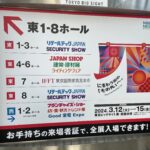The embezzlement of a large amount of money from baseball player Shohei Ohtani’s account by former interpreter Ippei Mizuhara, and the theft of a gold tea bowl worth over ten million yen from Nihonbashi Takashimaya, were both big surprises from a “that can’t happen!” perspective.
- Mizuhara, knowing Ohtani’s account ID and password, logged in and then altered the registration information to keep his embezzlement from being detected by Ohtani.
- The Takashimaya case was driven by the thief’s perception that “it seemed stealable, so I stole it.” He frequented the place, thinking he could steal other items as well, highlighting issues with surveillance and security that actually allowed items to be stolen.
In both cases, I feel that using vein authentication could have prevented these incidents, and although it sounds like a promotion for Mofiria, I would like to comment.
In case 1, ID and password can be logged in by anyone if they are leaked, but vein authentication makes impersonation impossible. It is also nearly impossible to create a fake, so Mizuhara would not have been able to carry out the fraud.
In case 2, while vein authentication would not contribute to surveillance, if the showcases were locked with vein-authenticated keys:
① Only registered individuals could open and close them.
② Accurate logs of who opened and closed them and when would be available. Thus, theft would not occur unless the cases were broken into, and such damage would likely be immediately noticed by security guards, who would apprehend the thief quickly.
I have shared these comments above.
Lastly, the impact of the recent delivery to the University of Tokyo Hospital earlier this month has been significant, and we are in a state of joyful alarm. We will continue to move forward toward a life that is safer, more secure, and more comfortable (improving Quality of Life).



